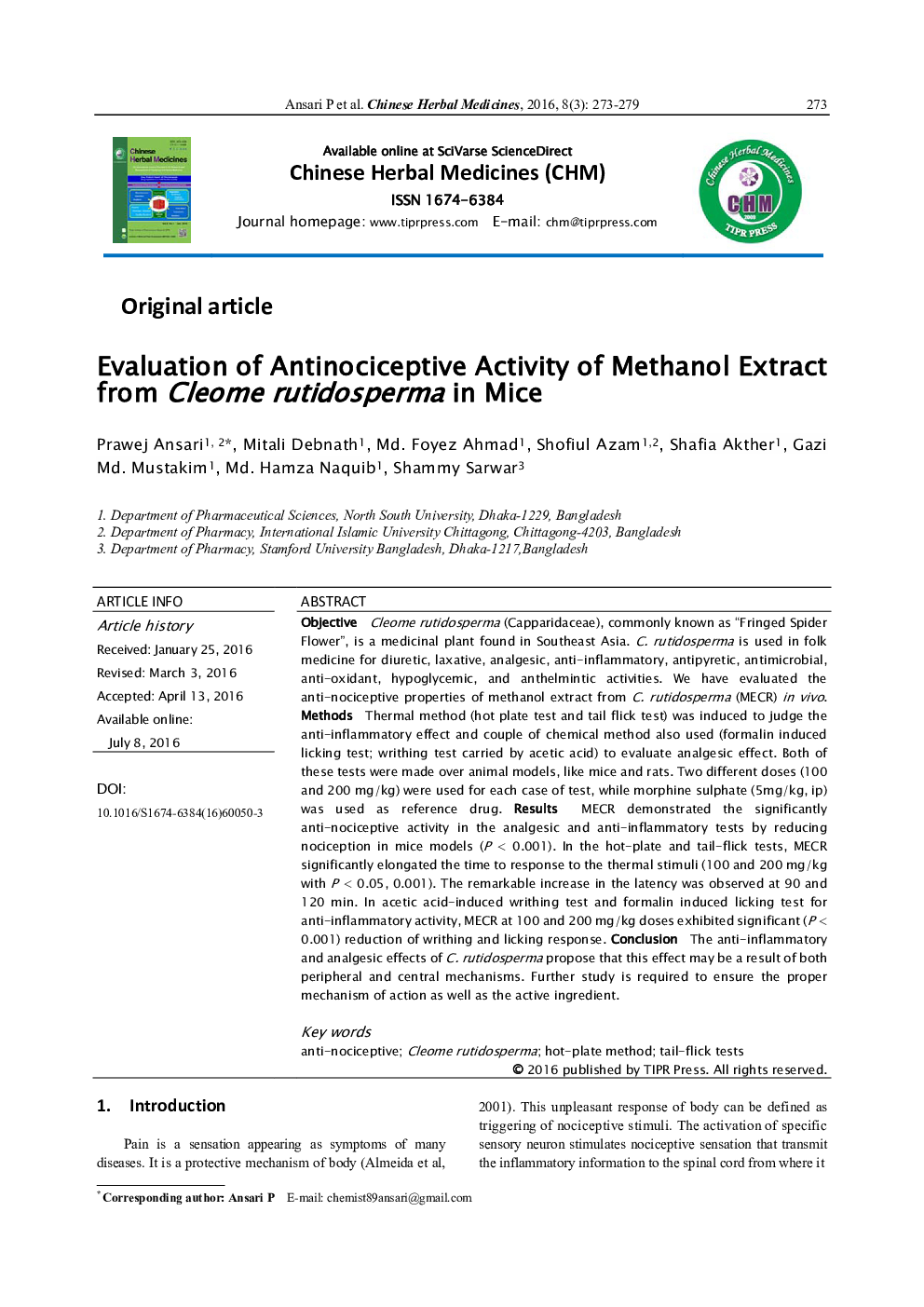| کد مقاله | کد نشریه | سال انتشار | مقاله انگلیسی | نسخه تمام متن |
|---|---|---|---|---|
| 3097847 | 1581497 | 2016 | 7 صفحه PDF | دانلود رایگان |
ObjectiveCleome rutidosperma (Capparidaceae), commonly known as “Fringed Spider Flower”, is a medicinal plant found in Southeast Asia. C. rutidosperma is used in folk medicine for diuretic, laxative, analgesic, anti-inflammatory, antipyretic, antimicrobial, anti-oxidant, hypoglycemic, and anthelmintic activities. We have evaluated the anti-nociceptive properties of methanol extract from C. rutidosperma (MECR) in vivo.MethodsThermal method (hot plate test and tail flick test) was induced to judge the anti-inflammatory effect and couple of chemical method also used (formalin induced licking test; writhing test carried by acetic acid) to evaluate analgesic effect. Both of these tests were made over animal models, like mice and rats. Two different doses (100 and 200 mg/kg) were used for each case of test, while morphine sulphate (5mg/kg, ip) was used as reference drug.ResultsMECR demonstrated the significantly anti-nociceptive activity in the analgesic and anti-inflammatory tests by reducing nociception in mice models (P < 0.001). In the hot-plate and tail-flick tests, MECR significantly elongated the time to response to the thermal stimuli (100 and 200 mg/kg with P < 0.05, 0.001). The remarkable increase in the latency was observed at 90 and 120 min. In acetic acid-induced writhing test and formalin induced licking test for anti-inflammatory activity, MECR at 100 and 200 mg/kg doses exhibited significant (P < 0.001) reduction of writhing and licking response.ConclusionThe anti-inflammatory and analgesic effects of C. rutidosperma propose that this effect may be a result of both peripheral and central mechanisms. Further study is required to ensure the proper mechanism of action as well as the active ingredient.
Journal: Chinese Herbal Medicines - Volume 8, Issue 3, July 2016, Pages 273–279
